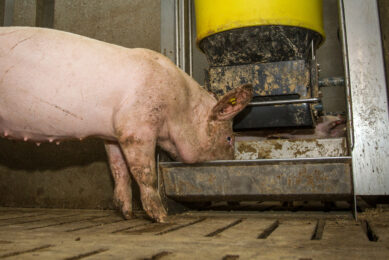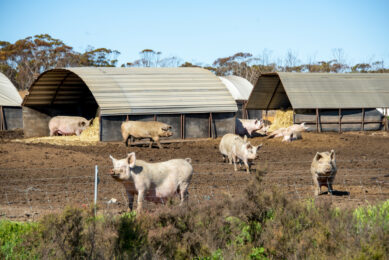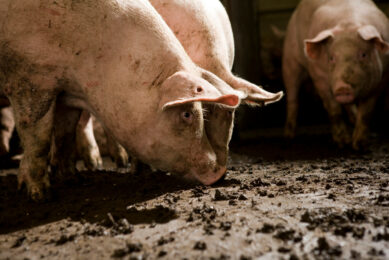40 years of reporting about pigs and poultry
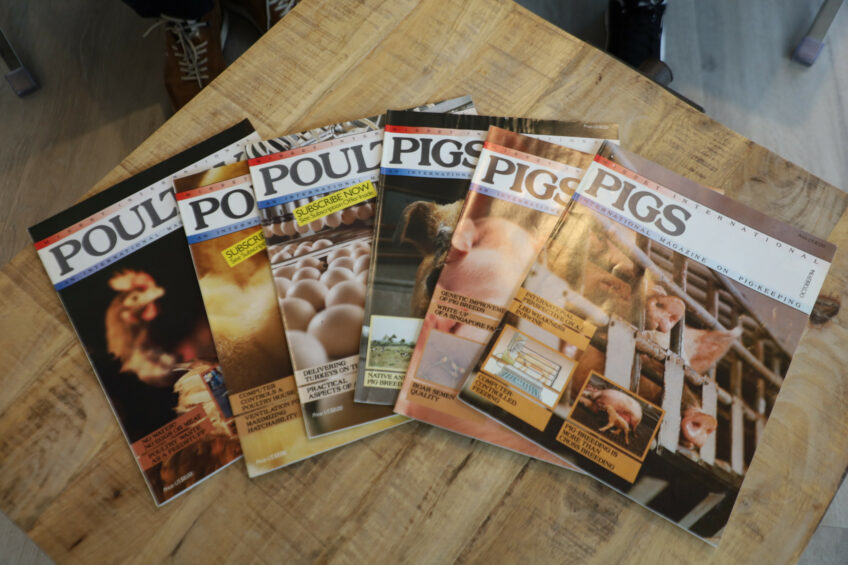
Happy birthday to Pig Progress and Poultry World! Both titles celebrate their 40th birthday in October. Time to look back to when it all began and how the titles changed and adapted in an ever-changing world of pig and poultry production.
In 1984, the world looked at Los Angeles for the Summer Olympics; Band Aid got together to compose the song “Do they know it’s Christmas?” and India made world headlines when its prime minister Indira Gandhi got assassinated.
In that very same year, in the city of Doetinchem in the Netherlands, a group of ambitious agricultural journalists had completely different things on their minds. They were planning to work on doing something entirely new: to start global titles in English related to the world of international poultry production and pig production.
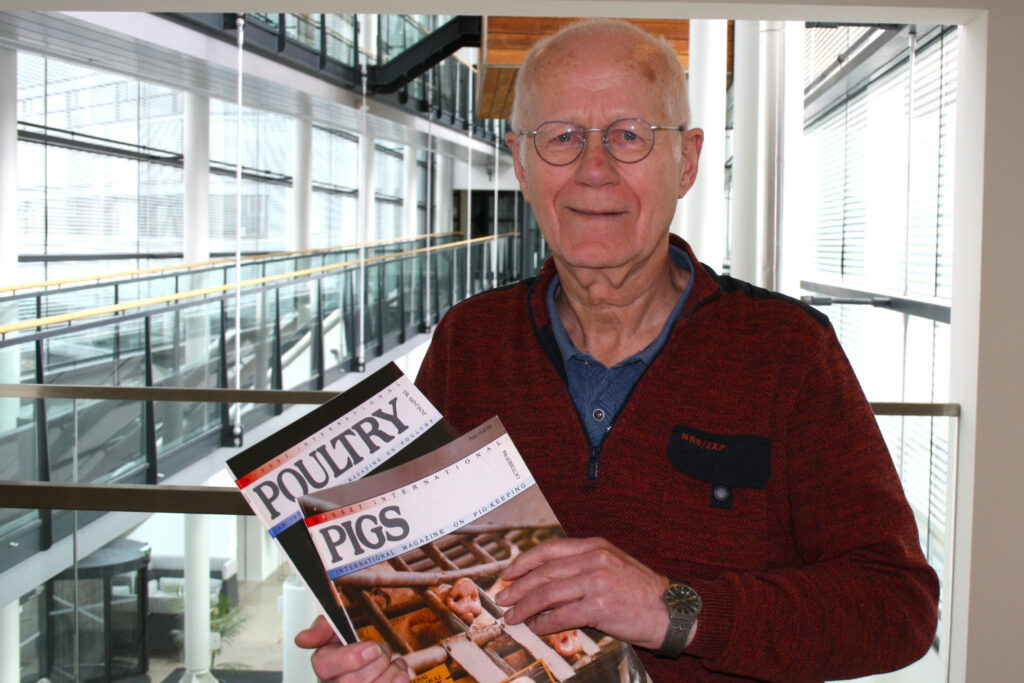
It was an adventurous and pioneering journey, recalls Wiebe van der Sluis, at the time editor for the Dutch publishing house Misset and involved in various agricultural titles aimed at the market in the Netherlands. He says, “Our company was thinking about making a title in English aimed at the international world of floraculture – and that is when we said, why not investigate if there are other titles for which we can do this, as well? How about pigs and poultry for instance?”
Good hunch
The hunch proved to be one with good perspectives, especially since globally oriented titles based in Europe did not really exist. “The only titles available in the market were produced in the United States. We knew we had to aim high in terms of knowledge, and share relevant, good content, e.g. from Rabobank or Wageningen University & Research, with the rest of the world.”
The initiative materialised and in October 1984 the first editions of Pigs and Poultry saw the light of day. Large magazines, almost broadsheet size, lumbacked and full of adverts – some by companies that still exist today, others by those that have long since disappeared.
Breeding and VIV Europe 1985
The first magazines included articles on how to do a better job when breeding, black and white pictures showed sows in stalls and articles looked ahead to VIV Europe 1985. Articles were often translated from originally Dutch content or had at times been written by experts from the Netherlands’ swine industry. The magazines contained a relatively large amount of text and also included plenty of marketing invitations inviting readers to subscribe.
We had done some proper market research and realised there was a decent demand from an international perspective for good, decent information
Former editor Wiebe van der Sluis
Van der Sluis comments, “Indeed, from the start, it had been the intention to make more than 1 edition. It was not like an initiative to make pilot editions and then see what the results would be. We had done some proper market research and realised there was a decent demand from an international perspective for good, decent information.”
Controlled circulation and other changes
That did not mean, however, that making the first editions was just a walk in the park. After a few years in the business with 4 relatively voluminous editions per year, there was a deficit of millions of guilders (the currency at the time in the Netherlands). A bottom line decision was needed for the still young titles Pigs and Poultry: for the international market in the 1980s, a subscription model was not ideal. Instead, the titles went for a distribution system of controlled circulation. Basically, anybody in the industry could subscribe, but they would only get an issue once every so often.
Secondly, something needed to be done about the presentation of the titles, he says. “We realised that we needed to upgrade the frequency tremendously to make sure that we would make a lasting impression on the market. In addition, instead of a lumbacking, we opted for stapling, which is a considerably more affordable method of making magazines.”
The last fundamental change was the editorial dedication. Van der Sluis admits that, in the first 18 months, making English language editions was something that had been done as an extra part-time job, i.e. they coincided with regular editorial duties for Dutch agricultural titles. As publishing in English also required a professional English-speaking sub-editor, it became clear pretty soon that going ahead internationally was not possible with an improvised ad hoc editorial team but would require a more permanent team. The international department within Misset was born.
Changes over the years
Over the years, this international department saw many things come and go. The publisher’s name changed to Elsevier, Reed Elsevier, Reed Business Information, and eventually it changed back to Misset. The editorial desk moved between different buildings within Doetinchem, where the titles are being produced – and even at the current headquarters the team occupied every floor. After acquiring an international title focused on the British Commonwealth, Poultry became World Poultry – and not much later Pigs transformed into Pig Progress. Early in 2017, World Poultry merged with its then British sister title Poultry World and ever since, that has been the flagship’s name.
The titles got printed in full colour, animal health lexicons appeared and the portfolio even grew with editions in Chinese and Spanish. The family of international titles grew, as well – for instance, on (poultry) meat production, flower production, feed production, fruit and vegetable production, dairy production and advanced arable production. (Unfortunately, titles also disappeared, for instance in 2009, when a big economic crisis caused the publisher to halve the department.)
Diversification in channels
Both titles on the global pig and poultry industries continued to prosper, however. With the emergence of the Internet, the Misset titles followed suit with decent outlets online for both the pig and poultry titles. Over the years, social media channels followed, including presence in webinars and seminars on trade shows. The magazines stood strong – with on average 10 editions per year. About 400 different editions of each title have been published.
Has the world of agriculture changed a lot since 1984? Van der Sluis recalls that even in 1984 the agricultural world was pretty international. “Wherever we went, we noticed Dutch companies being active. I went to Riyad very shortly after we began, and I was pleasantly surprised to learn that so many companies already established good trading contacts. Yet, the difference with nowadays is that many more companies from many other places in the world have made those steps.”
And where will the world of agriculture be 40 years from now? Van der Sluis smiles but declines to give an answer, as it is impossible to project how things will develop. “After all, who would have thought back then that I would be sitting here, in 2024, reflecting on 40 years of Pigs and Poultry? Who would have thought we would now be talking about more welfare or hatching eggs at 24 days instead of 21?”
By October 2024, both Pigs and Poultry will have existed for 40 years, no small feat for titles that started in the fall of 1984. The Summer Olympics will be held in Paris, Beyoncé will attract full houses with her country music and it is to be hoped that any guns will remain silent.
Co-author: Fabian Brockötter



